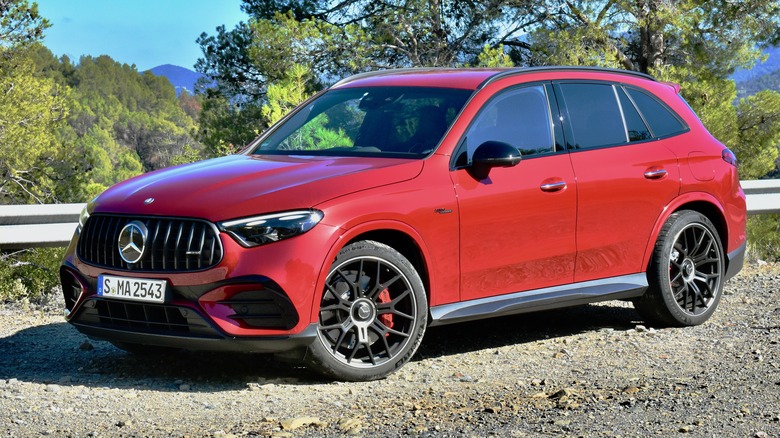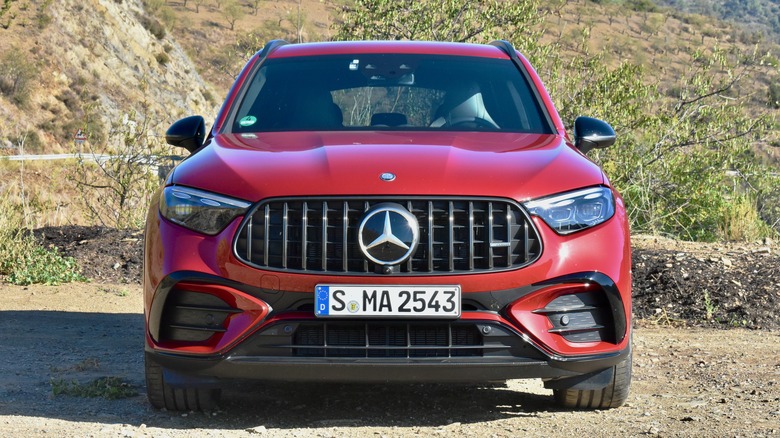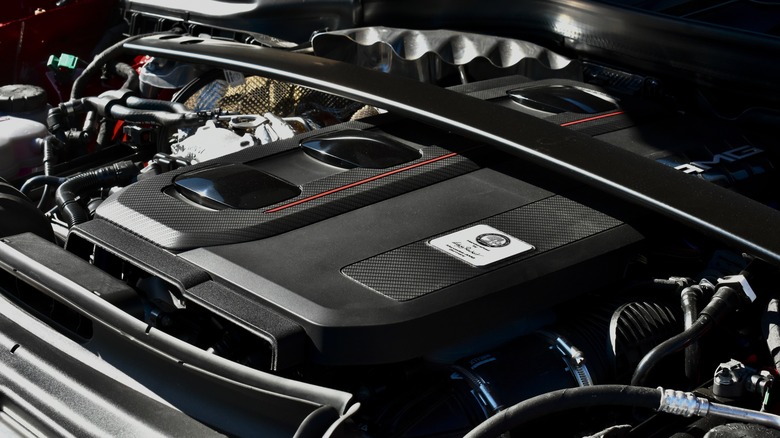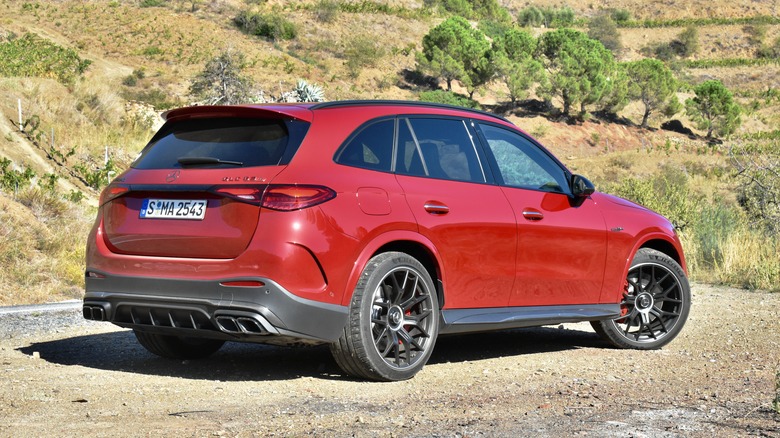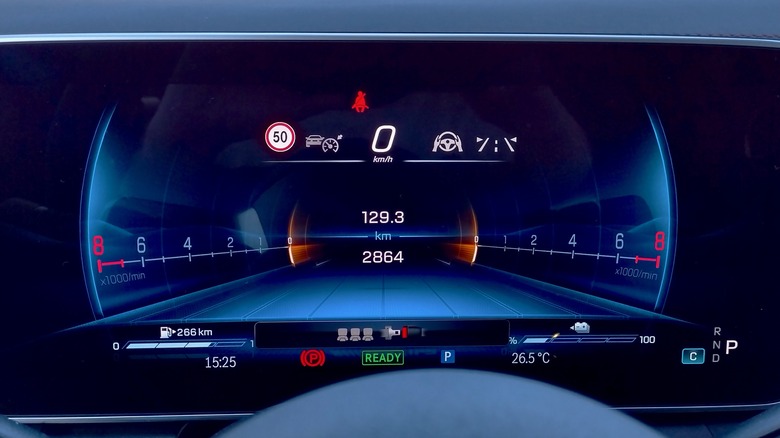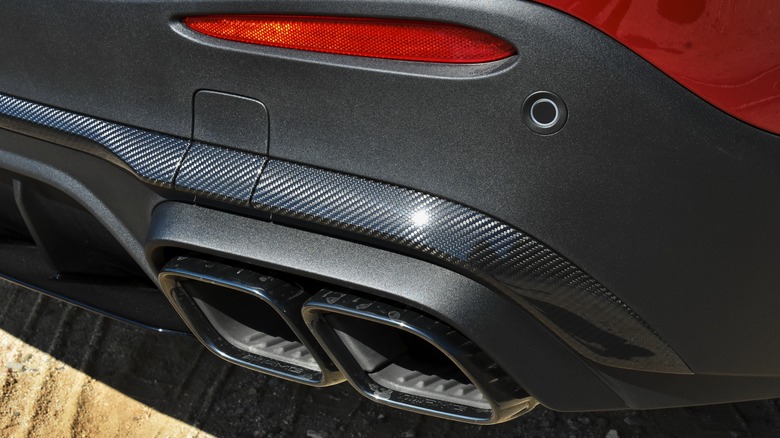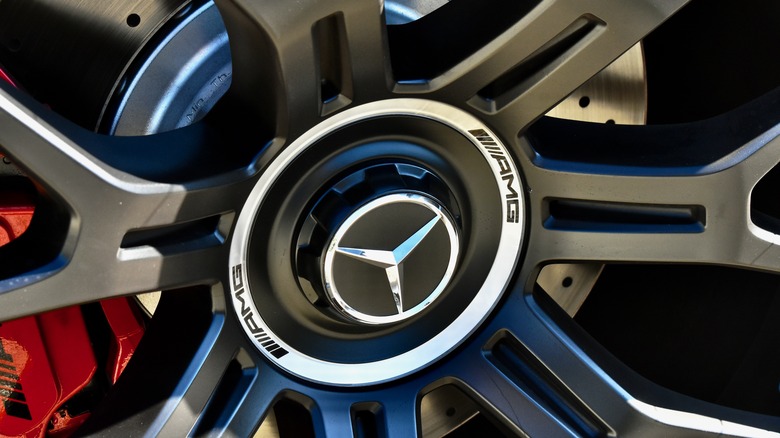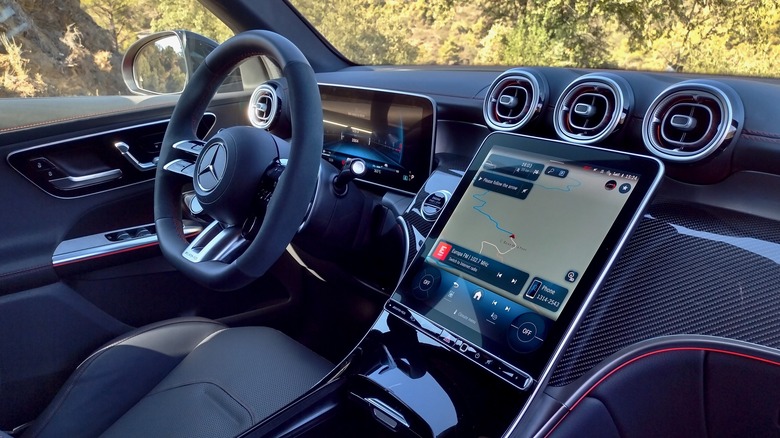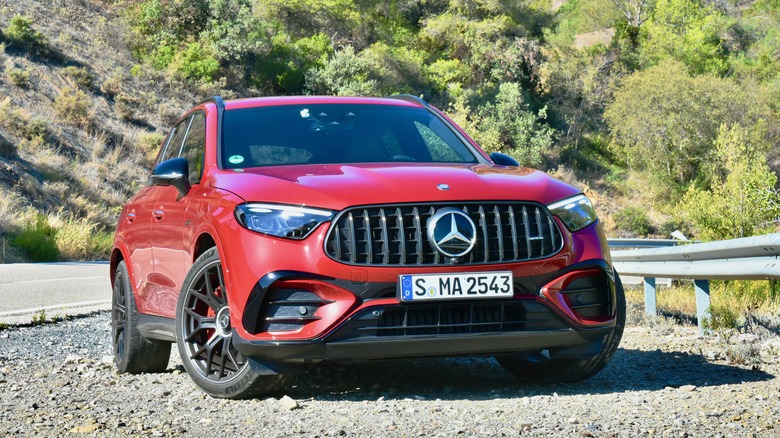2025 Mercedes-AMG GLC 63 S E Performance First Drive: More Of Everything
Mercedes-AMG specializes in turning ordinary Mercedes-Benz models into performance cars, and the GLC 63 has been one of its most unusual creations. For the outgoing first-generation version, AMG stuffed a 4.0-liter twin-turbocharged V8 into a small crossover SUV—something even Mercedes' German rivals felt was too excessive for their small performance SUVs. Now, AMG is going for a different kind of excess.
Scheduled to reach U.S. showrooms in the second half of 2024, the 2025 Mercedes-AMG GLC 63 S E Performance is all about more. In addition to a name that takes more than a full breath to say, it has a complex plug-in hybrid powertrain shared with the AMG C 63 S E Performance that produces more power than the old V8 powertrain. And it has every piece of chassis hardware conceivable to make maximum use of that power and compensate for a heavier, taller—but sales-friendly—SUV body.
These elements combine to make a unique performance car. It's AMG's first plug-in hybrid SUV, and the only vehicle in its competitive set to rely on electrification to boost performance. The BMW X3 M, Alfa Romeo Stelvio Quadrifoglio, Maserati Grecale Trofeo, and the sportier versions of the Porsche Macan are all sticking with straight internal combustion for now. Has AMG got the jump on its rivals, or has it driven into a technological cul-de-sac?
Niche model
The GLC 63 S E Performance isn't surprising in the context of Mercedes' product plans. Once the automaker unveiled the C 63 S E Performance version of the C-Class sedan, it was a given that the related GLC would get the same powertrain. But that makes for a more intriguing vehicle.
The C 63 also lost a V8 engine in the shift to plug-in hybrid propulsion, but it didn't always have one. A number of different engines have been used in various generations of AMG C-Class, just as has been the case with rivals from BMW and Audi. In its short existence, however, the GLC 63 has only ever had a V8, and that's made it unique.
There's never been a V8-powered BMW X3 M, and Audi doesn't even make a hardcore RS version of its Q5. So the outgoing GLC 63 was really something special. As with so many new cars, though, the new GLC 63 aims to prove that technology can be special too.
Impressive engineering
The AMG E Performance plug-in hybrid powertrain employed in the GLC 63 is a catalog of engineering nerdery. It starts with a 2.0-liter turbocharged four-cylinder engine with an electric turbocharger. An electric motor keeps the turbo spinning at low rpm, with exhaust gases taking over to spin it at higher speeds in the conventional manner. This keeps turbo boost—and thus power—consistent across the rev range.
Coupled to a nine-speed automatic transmission and an AMG-specific 4Matic+ all-wheel drive system, the gasoline engine produces 469 horsepower and 402 pound-feet of torque. That makes it the world's most powerful production four-cylinder engine, according to Mercedes.
The engine is backed by an electric motor that produces up to 201 hp and 236 lb-ft of torque, but only for 10 seconds at a time. Mounted at the back, it drives the rear wheels through a two-speed transmission and limited-slip differential. The motor, gearbox, and differential are all packaged together as one compact drive unit, with a 6.1-kilowatt-hour battery pack mounted above.
Quick, but not savage
Gasoline and electric elements combine to produce 671 hp and 752 lb-ft of torque. That's a healthy 168 hp and 236 lb-ft more than the old V8-powered GLC 63, and it will get the new model from zero to 60 mph in 3.4 seconds, according to Mercedes. Top speed is electronically limited to 171 mph.
The plug-in hybrid version is 0.4 second quicker to 60 mph than the twin-turbo V8 model, which was also limited to 155 mph. It's also 0.3 second quicker than a 503-hp BMW X3 M Competition, and 0.2 second quicker than the 523-hp Maserati Grecale Trofeo. So, AMG can claim some bragging rights, although one would think the gap would be even greater given the difference in horsepower. It shows the diminishing returns of continually increasing power in fairly heavy SUVs.
The sensation of putting that 671 hp to the pavement is also different from the non-hybrid competition. The GLC 63 doesn't launch hard; once it's rolling there's a distinct pause before full power is applied. This isn't the most dramatic way to accelerate—a feeling not helped by the fairly mundane exhaust note—but it is less antisocial than the gut-punch feel of some performance cars. It seems like a better fit for an SUV that'll likely serve as transportation for more than just its driver.
F1-inspired battery tech
Mercedes claims to have used lessons learned from its Formula One hybrid powertrains to develop the battery pack, which also features a direct-cooling system that cools each cell individually to help better manage temperature. This ensures that electric power is always available and the powertrain's maximum output can be achieved.
We never got the battery pack down below about half charge, so we couldn't put this claim to the test. However, it definitely felt like the GLC 63 was using both gasoline and electric power to the fullest at all times. Unless it's switched into all-electric mode, that is. It's even possible to select all the most aggressive steering and suspension settings in electric mode, so you can get the best handling without waking up the gasoline engine. This came in handy on some particularly narrow roads where we felt the car needed to be reined in too much in hybrid mode.
Mercedes hasn't disclosed electric-range estimates for the U.S., but the GLC 63 likely won't be able to travel more than a few miles on electric power alone. The electric motor is primarily for supplying added power that would otherwise require a bigger, thirstier combustion engine, not driving the car by itself. Like many plug-in hybrids, the GLC 63 also tends to start its engine once the accelerator pedal is pushed hard, although in this case there isn't a discernible detent in the pedal travel marking that threshold.
Fighting physics
SUVs may be popular with customers, but they're not the ideal platform for performance. Compared to sedans and coupes, SUVs are generally heavier and taller, meaning they have a higher of center of gravity that affects handling. But the GLC 63 fights a valiant battle against the laws of physics.
The weapons AMG chose include a suspension system with adaptive damping, and an active roll stabilization system that replaces conventional anti-roll bars. Actuators connect or disconnect bars running between the wheels on each axle, counteracting body roll during cornering as well as allowing wheels to move individually on rough roads—improving ride quality. Speed-sensitive steering and rear-axle steering are also standard.
These features definitely bring the handling up to the same level as the powertrain. The rear-axle steering in particular made the GLC 63 feel a lot nimbler on tight curves, and the body stayed fairly flat without the dramatic lean that sometimes comes with flinging a tall vehicle into a corner. But it was hard to develop a connection with this collection of technology. This is a car that constantly reminds you that you are underutilizing its vast performance capabilities at moderate speeds, and doesn't become more lively or engaging when you pick up the pace.
Well-blended brakes
The brakes follow the same pattern as the powertrain and chassis. They're an impressive technical achievement, and get the job done, but in a somewhat unsatisfying manner.
The GLC 63 combines powerful friction brakes—including six-piston floating calipers and 15.4-inch rotors at the front and single-piston floating calipers and 14.6-inch rotors at the back—with regenerative braking. You get four levels of regen ranging, with the highest level coming fairly close to one-pedal driving. It slows the car down to about the pace one would creep forward at a stoplight, but won't bring it to a complete stop.
Blending mechanical and regenerative braking can be tricky, but AMG pulled it off. Pedal feel is consistent whether you're using a lot of regen or none at all. However, it's also consistently vague. Even the most sensitive feet will have trouble determining how much pedal pressure is needed. The brakes also lack the strong, confidence-inspiring initial bite of other performance car braking systems. Carbon-ceramic brakes will be available after launch, though, and might address that.
Interior combines form and function
The basic interior that debuted with the recent 2023 Mercedes-Benz GLC redesign has a nice look, with just enough detail to make it feel special and welcoming. Thick door panels give a more enclosed feel than the typical SUV, where it can often feel like you're sitting on the vehicle rather than in it. The AMG treatment includes carbon fiber trim for the expansive dashboard and optional performance seats with added bolstering. They were fairly comfortable, and good at keeping butts in place during hard cornering.
The Mercedes-Benz User Experience (MBUX) infotainment system also largely carries over from the standard GLC. A 12.3-inch digital instrument cluster and 11.9-inch touchscreen, along with wireless Apple CarPlay and Android Auto. The interface includes precious few analog controls, but the MBUX voice control is so good that we rarely needed to touch the touchscreen. The GLC 63 also gets an AMG Track Pace data logger for recording lap times—a feature that probably won't see much use.
Competent, but compromised
AMG's engineers deserve a pat on the back for creating the GLC 63 S E Performance, because it's a car that makes more sense to product planners than driving enthusiasts. The GLC is one of Mercedes' most popular models, and the automaker is shifting toward electrification, so a plug-in hybrid performance version checks a lot of boxes. But it's unlikely any engineer would create such a vehicle if they had a choice, or that many driving enthusiasts would seek one out.
The GLC 63 makes a strong case for itself. It's not as engaging to drive as more traditional performance SUVs like the BMW X3 M or Maserati Grecale Trofeo, but it has a remarkable breadth of capability. It accomplishes the rare feat of combining back-road pace with everyday usability. And while pricing hasn't been released (the old GLC63 started at around $75,000) all that justifies this new plug-in hybrid's place at the top of the GLC lineup.
That doesn't make the GLC 63 the best ambassador for performance plug-in hybrids, though. Where electrification enhances the Mercedes-AMG S 63 E Performance—which keeps its V8 engine—here it mostly serves to generate impressive power numbers to compensate for an engine with half as many cylinders. The compromises inherent in designing a vehicle to do so many things, and appease so many conflicting interests, are too apparent.
